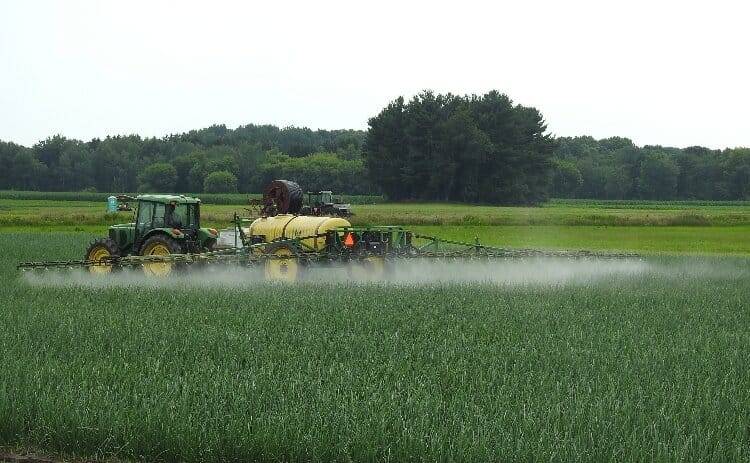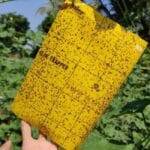Main Points In Hindi (मुख्य बातें – हिंदी में)
यहां दिए गए पाठ के मुख्य बिंदु इस प्रकार हैं:
-
बीसी कॉब पावर प्लांट का प्रभाव: 2016 में बीसी कॉब पावर प्लांट के बंद होने के बाद, मुस्केगॉन काउंटी को खोए हुए कर राजस्व और बंदरगाह गतिविधि को बदलने के लिए नए समाधान खोजने की आवश्यकता पड़ी।
-
कृषि और खाद्य प्रसंस्करण की संभावनाएं: स्थानीय नेताओं ने समझा कि पश्चिम मिशिगन में कृषि और खाद्य प्रसंस्करण उद्योग की अप्रयुक्त क्षमता है, जिससे वे क्षेत्रीय अर्थव्यवस्था को दोबारा उभारने का प्रयास कर रहे हैं।
-
अर्थव्यवस्था को पुनर्जीवित करने के प्रयास: अमेरिकी वाणिज्य विभाग के आर्थिक विकास प्रशासन से $125,000 का अनुदान प्राप्त करने के बाद, WMSRDC ने कृषि क्लस्टर प्रभाव विश्लेषण का अध्ययन करने की प्रक्रिया शुरू की है।
-
सामुदायिक सहयोग: इस अध्ययन में कई संगठनों के बीच साझेदारी और सहयोग को बढ़ाने का लक्ष्य है, जिससे कृषि और खाद्य प्रसंस्करण के क्षेत्र में विकास को बढ़ावा मिले।
- डेटा और संसाधनों का उपयोग: अध्ययन किसानों, उद्योग नेताओं, और समुदाय के सदस्यों को क्षेत्र की संपत्तियों के बारे में जानकारी प्रदान करेगा, जिसमें भौगोलिक सूचना प्रणाली के माध्यम से डेटा संग्रहण शामिल है।
Main Points In English(मुख्य बातें – अंग्रेज़ी में)
Here are the main points from the provided text about the agricultural initiatives in Muskegon County, Michigan:


-
Impact of Power Plant Closure: The closure of the BC Cobb Power Plant in 2016 prompted Muskegon County to seek alternative revenue sources and explore ways to revitalize port activities and the local economy.
-
Focus on Agriculture: Local leaders began to consider the agricultural potential of West Michigan, recognizing an opportunity in the region’s fertile soil and agricultural diversity, which led to initiatives aimed at studying and promoting agricultural and food processing assets.
-
Funding and Research Initiatives: The Economic Development Administration (EDA) provided a grant of $125,000 to study the agricultural and food processing capacity in the region, driving efforts to align workforce training with industry needs.
-
Collaboration and Development Plans: The West Michigan Shoreline Regional Development Commission (WMSRDC) emphasized collaboration with multiple stakeholders, including Michigan State University, to create an interactive asset map and enhance research focused on agricultural properties, zoning, and soil types.
- Ongoing Support and Future Goals: The region aims to leverage its agricultural diversity to attract food processors and strengthen the local economy, with support from the Economic Recovery Corps (ERC) to identify challenges and opportunities for growth in the agricultural sector over the next several years.
Complete News In Hindi(पूरी खबर – हिंदी में)
2016 में बीसी कॉब पावर प्लांट के बंद होने से मुस्केगॉन काउंटी को खोए हुए कर राजस्व और बंदरगाह गतिविधि को बदलने के तरीकों की तलाश करनी पड़ी।
जैसे ही समुदाय प्रभाव से उबर गया, स्थानीय नेताओं ने समाधान के लिए पश्चिम मिशिगन की जड़ों – इसकी उपजाऊ मिट्टी से लेकर इसकी कृषि विविधता तक – की ओर देखना शुरू कर दिया।
इसने प्रयासों की एक श्रृंखला को गति दी, जो हाल ही में क्षेत्र की कृषि और खाद्य प्रसंस्करण संपत्तियों और क्षमता का अध्ययन करने के लिए अमेरिकी वाणिज्य विभाग आर्थिक विकास प्रशासन (ईडीए) से $125,000 के अनुदान के रूप में परिणत हुई।
“(कोब संयंत्र) की हार ने हमें एक समुदाय के रूप में सोचने पर मजबूर कर दिया: हम कर आधार को कैसे बदल सकते हैं? हमारी बंदरगाह सुविधाओं का क्या होगा?” के कार्यकारी निदेशक एरिन कुह्न कहते हैं पश्चिम मिशिगन शोरलाइन क्षेत्रीय विकास आयोग (डब्ल्यूएमएसआरडीसी)।
“बहुत सारे अध्ययनों के बाद, हमें एहसास हुआ कि पश्चिम मिशिगन में एजी और खाद्य प्रसंस्करण उद्योग की अप्रयुक्त क्षमता है, न केवल मुस्केगॉन काउंटी में, बल्कि पूरे क्षेत्र में।”
विकास का मार्गदर्शन करना
2018 में, WMSRDC ने बिल्ड बैक बेटर अनुदान के लिए आवेदन किया था। हालाँकि यह तब असफल रहा था, लेकिन इस प्रयास ने वर्तमान अध्ययन के लिए आधार तैयार किया, जिसे वेस्ट मिशिगन कृषि क्लस्टर प्रभाव विश्लेषण कहा जाता है।
कुह्न कहते हैं, “अब हम कई संगठनों में साझेदारी और सहयोग का लाभ उठाकर अपने एजी और खाद्य प्रसंस्करण क्षेत्रों को बढ़ाने पर ध्यान केंद्रित कर रहे हैं।”
मिशिगन देश का दूसरा सबसे विविध कृषि राज्य है।
अध्ययन लेक, मेसन, मुस्केगॉन, न्यूएगो और ओशियाना काउंटियों पर ध्यान केंद्रित करेगा, जिसका लक्ष्य डेटा प्रदान करना है जो हितधारकों का मार्गदर्शन करेगा, क्षेत्रीय संपत्तियों को बढ़ावा देगा और उद्योग की जरूरतों के साथ कार्यबल प्रशिक्षण को संरेखित करेगा।
कुह्न कहते हैं, “जिन अध्ययनों ने हमें कृषि पर ध्यान केंद्रित करने के लिए प्रेरित किया, वे 2016 में आयोजित किए गए थे। तब से बहुत कुछ बदल गया है।” “यह नया अध्ययन, जिस पर हम मिशिगन स्टेट यूनिवर्सिटी के जीआईएस (भौगोलिक सूचना प्रणाली) विभाग के साथ काम कर रहे हैं, हमें खेतों और उपयोगिताओं से लेकर ज़ोनिंग और मिट्टी के प्रकारों तक, हमारे क्षेत्र की संपत्तियों की नवीनतम डेटा और स्पष्ट तस्वीर देगा। . यह डेटा उद्योग जगत के नेताओं, समुदाय के नेताओं और आर्थिक डेवलपर्स के लिए सार्वजनिक और सुलभ बनाया जाएगा, जिससे हमें बेहतर, सूचित निर्णय लेने की अनुमति मिलेगी।”
संपत्तियों को समझना
कुह्न का कहना है कि अगले 12 महीनों में होने वाले अध्ययन में कृषि क्षेत्र अनुसंधान, जीआईएस संपत्ति मानचित्रण और रणनीतिक निवेश की पहचान शामिल होगी।
समूह एक इंटरैक्टिव परिसंपत्ति मानचित्र बनाने के लिए एमएसयू के साथ साझेदारी कर रहा है। यह सार्वजनिक रूप से सुलभ होगा, जिससे उद्योग जगत के नेताओं और समुदाय के सदस्यों को औद्योगिक पार्कों से लेकर मिट्टी के प्रकार तक हर चीज के बारे में जानकारी इकट्ठा करने की अनुमति मिलेगी।
कुह्न कहते हैं, “हमारे पास प्रचुर मात्रा में ताजा पानी, अच्छी मिट्टी है और हम कैलिफोर्निया के बाद देश में दूसरा सबसे विविध कृषि राज्य हैं।” देश की खाद्य प्रसंस्करण आवश्यकताओं को पूरा करने में मदद करने के लिए एक स्टॉपगैप अगर कहीं और आपदा आती है, तो यहां खाद्य प्रोसेसर लाकर, हम रसद लागत को कम कर सकते हैं, अपनी अर्थव्यवस्था को मजबूत कर सकते हैं, और सुनिश्चित कर सकते हैं कि हम एक व्यवहार्य विकल्प हैं।
नेताओं का कहना है कि पश्चिम मिशिगन में एजी और खाद्य प्रसंस्करण उद्योग में अप्रयुक्त क्षमता है।
परियोजना भागीदारों में एमएसयू उत्पाद केंद्र, न्यूएगो काउंटी आर्थिक विकास साझेदारी, मेसन काउंटी के चैंबर एलायंस, ओशियाना काउंटी आर्थिक गठबंधन, ग्रेटर मुस्केगॉन आर्थिक विकास, लेक काउंटी आर्थिक विकास गठबंधन और मुस्केगॉन काउंटी शामिल हैं।
अग्रणी प्रयास
प्रभाव विश्लेषण के अलावा, WMSRDC को इस वर्ष की शुरुआत में एक मेजबान संगठन के रूप में चुना गया था आर्थिक सुधार कोर (ईआरसी), अंतर्राष्ट्रीय आर्थिक विकास परिषद द्वारा प्रबंधित एक संघीय कार्यक्रम। कृषि और खाद्य प्रसंस्करण क्षेत्रों के लिए समर्थन बढ़ाने पर ध्यान केंद्रित करने के लिए ईआरसी फेलो, अन्निका गैकनिक को डब्ल्यूएमएसआरडीसी के साथ जोड़ा गया था।
अन्निका गैक्निक
ईआरसी देश भर में आर्थिक विकास को मजबूत करने के अग्रणी प्रयास का हिस्सा है। शराब और मछली पालन से लेकर शहरी खेती तक, खाद्य उद्योग में पृष्ठभूमि रखने वाली और न्यूयॉर्क विश्वविद्यालय से खाद्य प्रणालियों में मास्टर डिग्री रखने वाली गैकनिक का कहना है कि वह बूट्स-ऑन का समर्थन करने वाले राष्ट्रीय कार्यक्रम के पहले समूह का हिस्सा बनने के लिए उत्साहित थीं। -छोटे समुदायों में जमीनी आर्थिक विकास।
गैकनिक की फ़ेलोशिप जुलाई 2026 तक 2 1/2 वर्षों के लिए संरचित है, जिससे उन्हें क्षेत्र की चुनौतियों और अवसरों का गहराई से पता लगाने के लिए आवश्यक समय मिलेगा।
“पहला वर्ष ज़मीन का अधिकार प्राप्त करने के बारे में है,” उसने समझाया। “मैं प्रोसेसर, उत्पादकों और हितधारकों के साथ उनके सामने आने वाली चुनौतियों को समझने, डेटा संकलित करने और इन चुनौतियों से निपटने के तरीकों की खोज करने के लिए बात कर रहा हूं। मैं पूरे राज्य पर भी नजर रख रहा हूं, क्योंकि पूरे मिशिगन में कई मुद्दों का सामना करना पड़ता है।
WMSRDC जैसे संगठनों का दायरा सीमित है, और Gacnik कृषि क्षेत्र को आगे बढ़ाने के लिए बहुत आवश्यक क्षमता जोड़ता है।
कुह्न कहते हैं, “यह 2016 से एक व्यवस्थित यात्रा रही है, और हमारा लक्ष्य अधिक प्रोसेसर को आकर्षित करने और स्थानीय अर्थव्यवस्था को बढ़ावा देने के लिए हमारे क्षेत्र की कृषि विविधता का लाभ उठाकर अगले पांच वर्षों में ठोस विकास देखना है।”
तस्वीरें WMSRDC के सौजन्य से।
Complete News In English(पूरी खबर – अंग्रेज़ी में)
In 2016, the closure of the BC Cob Power Plant forced Muskegon County to look for new ways to replace lost tax revenue and port activity. As the community recovered, local leaders began to explore solutions rooted in West Michigan’s strengths, particularly its fertile soil and agricultural diversity.


This led to initiatives aimed at studying the region’s agricultural and food processing assets, resulting in a $125,000 grant from the U.S. Department of Commerce’s Economic Development Administration (EDA). Erin Kuhn, the executive director of the West Michigan Shoreline Regional Development Commission (WMSRDC), notes that the loss of the plant prompted the community to think about how to change their tax base and the future of their port facilities.
"After many studies, we realized there was untapped potential in the agriculture and food processing industries in West Michigan, not just in Muskegon County, but throughout the region," Kuhn stated.
In 2018, WMSRDC applied for a Build Back Better grant, which was unsuccessful but laid the groundwork for a current study called the West Michigan Agriculture Cluster Impact Analysis. Kuhn mentions that by leveraging partnerships and collaboration among various organizations, they are now focusing on enhancing their agriculture and food processing sectors.
The study will concentrate on Lake, Mason, Muskegon, Newaygo, and Oceana Counties, aiming to provide data that will guide stakeholders, promote regional assets, and align workforce training with industry needs. Kuhn adds that previous studies had prompted a focus on agriculture in 2016, and much has changed since then. The new study, conducted in partnership with Michigan State University’s GIS (Geographic Information Systems) department, will offer updated data on everything from farms to zoning and soil types. This data will be made publicly accessible to help industry leaders and community decision-makers make informed choices.
The study over the next year will involve agricultural research, GIS property mapping, and identifying strategic investments. The team is creating an interactive asset map with MSU that will be publicly available, allowing industry leaders and community members to access information on various aspects, from industrial parks to soil types.
Kuhn points out that Michigan is the country’s second most diverse agricultural state, and by attracting food processors to help meet the nation’s food processing needs—especially if there are disasters elsewhere—they can reduce logistics costs, strengthen the local economy, and ensure they are a viable option.
Key project partners include the MSU Product Center, Newaygo County Economic Development Partnership, Mason County Chamber Alliance, Oceana County Economic Alliance, Greater Muskegon Economic Development, Lake County Economic Development Alliance, and Muskegon County itself.
Besides the impact analysis, WMSRDC was chosen as a host organization for the Economic Recovery Corps (ERC), a federal program managed by the International Economic Development Council. Annika Gacnik, an ERC fellow with a background in the food industry and a master’s degree in food systems from New York University, is excited to be part of this program focusing on improving support for agriculture and food processing.
Gacnik’s fellowship is structured for 2.5 years, allowing her to deeply explore the region’s challenges and opportunities. She explains that her first year will focus on understanding the challenges faced by processors, producers, and stakeholders, compiling data, and finding solutions while observing issues across Michigan.
Organizations like WMSRDC have limited capacities, and Gacnik’s contributions are crucial for advancing the agriculture sector. Kuhn emphasizes that since 2016, their journey has been systematic, and their goal is solid growth within the next five years by attracting more processors and leveraging the region’s agricultural diversity.
All images are courtesy of WMSRDC.








